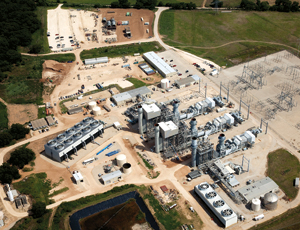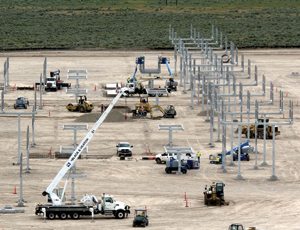Uncertainty about the nation’s economic future and possible federal legislation on climate change and renewable energy is reshaping the market for building power-generation and transmission projects in the U.S., according to executives at some of the nation’s largest contractors. That uncertainty has led many coal-fired projects to be canceled or put on hold, several natural gas-fired projects to be delayed, and even some wind projects to be put on ice while utilities and independent power companies try to figure how long the recession will last and what Congress ultimately will agree to on a carbon cap-and-trade program and a renewable portfolio standard.


Firms add that while a dozen or more nuclear projects remain on track for construction in the 2012-through-2020 period—with several short-listed for federal loan guarantees— some wonder if cost escalation and public opposition might doom some projects.
“It’s no secret that things are a little slow” in the power sector as a whole, says Lee Moore, vice president of business development at Lauren Engineers & Constructors Inc., Abilene, Texas. Because of the slowdown in the economy, “load growth hasn’t been as brisk as people thought it would be two years ago,” leading many utilities and independent power companies to delay power projects they had been planning, he says.
Perhaps the most fortunate construction companies involved in the power sector now are those in the midst of building one or more major projects that will keep them busy for another year or two, because it may be that long before a steady stream of new coal- or gas-fired projects will be awarded. Construction of the first of the new round of nuclear plants is not likely to begin until 2011 or 2012.
Dean Oskvig, president and CEO of the global energy business at Black & Veatch, Overland Park, Kan., agrees that project developers are skittish. “A lot of asset owners are hesitant to [start] projects until they sense a bottoming out on [steel and other commodity] prices and sense more certainty regarding the carbon question,” he says.
Coal projects are probably the most troubled sector of the power market right now because of concern that a federal cap-and-trade program could significantly increase the cost of generating power at coal plants, Oskvig says. Congress continues to debate how a cap-and-trade program should be structured, and appears unlikely to approve a bill before winter.
So far in 2009, numerous coal projects have been canceled, suspended or postponed. In every case the developer cited a combination of regulatory uncertainty and the weak economy.
The scuttled projects include LS Power’s 1,600-MW project in White Pine County, Nev., and its 750-MW project in Midland, Mich.; NV Energy’s 1,500-MW project in eastern Nevada; Alliant Energy’s 630-MW project in Marshalltown, Iowa; AES Corp.’s Shady Point Unit 2 project in Panama, Okla.; and Southern Montana Electric’s 250-MW project in Great Falls, Mont.
In addition to looming uncertainty about cap-and-trade, projects fired by coal have other factors working against them. It typically takes five or six years to plan, permit, finance, design and build a coal project, says B&V’s Oskvig, but only half as long to do the same for a gas plant. Given that utilities are particularly wary of risk and are...



Post a comment to this article
Report Abusive Comment